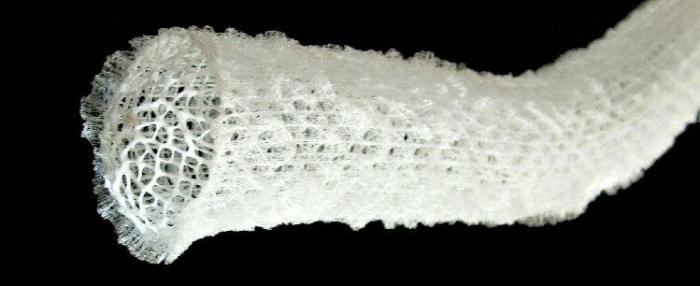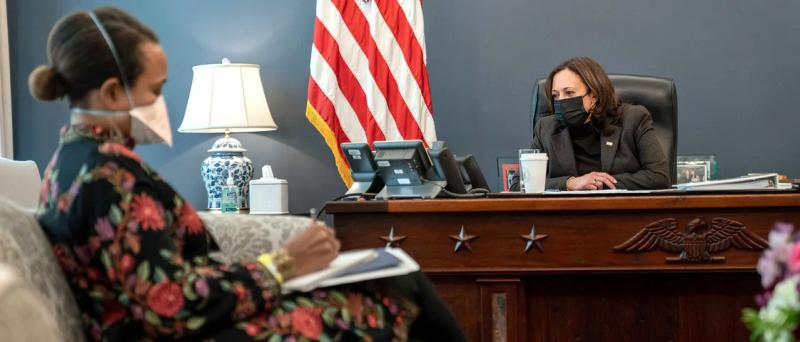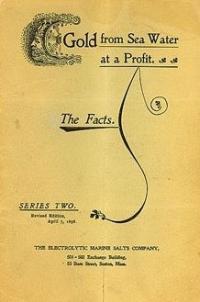 The Ever Given no longer blocks traffic in the Suez Canal but, in a very real sense, the ship is still stuck in the canal. The ultra-large container ship ran aground for about a week in late March, blocking ships transiting the canal in both directions. Although the ship was freed on March 29th and is currently at anchor in the canal’s Great Bitter Lake, it is not allowed to leave until unspecified damages are paid, according to officials with the Suez Canal Authority. While the shipowner has not officially heard from Egyptian authorities, there are reports that the claimed compensation could reach $1 billion.
The Ever Given no longer blocks traffic in the Suez Canal but, in a very real sense, the ship is still stuck in the canal. The ultra-large container ship ran aground for about a week in late March, blocking ships transiting the canal in both directions. Although the ship was freed on March 29th and is currently at anchor in the canal’s Great Bitter Lake, it is not allowed to leave until unspecified damages are paid, according to officials with the Suez Canal Authority. While the shipowner has not officially heard from Egyptian authorities, there are reports that the claimed compensation could reach $1 billion.

Image: Galveston Historical Foundation
Here is a short video from a 2021 day sail out of Galveston on the 1877-built square-rigged iron barque Elissa.
The Elissa Sail Out of Galveston April 2021 Galveston Historical Foundation
 We recently posted about plans to build an emission-free bulk carrier powered by compressed hydrogen and rotors sails to be in service by 20204. The European Flagships Project has announced plans to begin operations of a hydrogen-powered cargo vessel on the River Seine in Paris by the end of 2021.
We recently posted about plans to build an emission-free bulk carrier powered by compressed hydrogen and rotors sails to be in service by 20204. The European Flagships Project has announced plans to begin operations of a hydrogen-powered cargo vessel on the River Seine in Paris by the end of 2021.
The hydrogen-powered cargo vessel will be owned by French inland shipowner Compagnie Fluvial de Transport (CFT), a subsidiary of the Sogestran Group. The company is currently developing a new business for urban distribution with transport vessels in the Paris area.
 Great Britain’s Prince Philip, the Duke of Edinburgh, died yesterday at the age of 99. He has been referred to as a sailor prince. The grandson of an admiral of the fleet and first sea lord, he was commissioned as a midshipman in the Royal Navy at 19. He would earn decorations for valor during World War II.
Great Britain’s Prince Philip, the Duke of Edinburgh, died yesterday at the age of 99. He has been referred to as a sailor prince. The grandson of an admiral of the fleet and first sea lord, he was commissioned as a midshipman in the Royal Navy at 19. He would earn decorations for valor during World War II.
The Duke was a patron for many charities and causes but may be best remembered by the nautical community for his efforts to save and restore the world’s only remaining tea clipper, the Cutty Sark.
 In the deep ocean, the Monorhaphis chuni, a type of glass sponge, can grow to be 10 feet long. A single silicon spine, or spicule, anchors itself to the seafloor, around which the softer sponge body is supported. The spine of the Monorhaphis chuni is by far the largest bio-silica structure of any known animal. The sponge is also among the longest-lived animals on earth, living many thousands of years. One Monorhaphis chuni spine investigated by researchers is from a sponge believed to approximately 11,000 years old.
In the deep ocean, the Monorhaphis chuni, a type of glass sponge, can grow to be 10 feet long. A single silicon spine, or spicule, anchors itself to the seafloor, around which the softer sponge body is supported. The spine of the Monorhaphis chuni is by far the largest bio-silica structure of any known animal. The sponge is also among the longest-lived animals on earth, living many thousands of years. One Monorhaphis chuni spine investigated by researchers is from a sponge believed to approximately 11,000 years old.
Scientists have discovered that the structure and chemistry of the long-lived sponge can provide a record of ocean temperature and sealife diversity. In the past 20 years, climate scientists have been researching the possible uses of sponges as proxies for long-term changes in the climate.
 Marine Log reports that Norwegian shipping firm Egil Ulvan Rederi has been awarded a contract to build what is claimed will be the world’s first zero-emission bulk carrier.
Marine Log reports that Norwegian shipping firm Egil Ulvan Rederi has been awarded a contract to build what is claimed will be the world’s first zero-emission bulk carrier.
The 88-meter, 5,000 DWT self-unloading vessel will be used on a Norwegian route to transport aggregates from Heidelberg Cement Norway in western Norway in one direction and grain from farmer-owned cooperative Felleskjøpet AGRI, in eastern Norway, on the backhaul.
The ship design concept was developed in close cooperation with Norwegian Ship Design — TNSDC — and has the project name “With Orca – Powered by Nature.” Continue reading
 The Vice President and the Secretary of the Navy now each have new “heritage desks,” built by Navy Seabees, using wood, fasteners, and fittings from historic US Navy ships.
The Vice President and the Secretary of the Navy now each have new “heritage desks,” built by Navy Seabees, using wood, fasteners, and fittings from historic US Navy ships.
The desk for Vice President Kamala Harris is made from wood, copper, and nails taken from the USS Constitution, one of the country’s first frigates. The Constitution is the oldest commissioned warship still afloat. The wood came from two restorations of the frigate conducted in 2007 and 2017.

Image: Gabriel Barathieu
When American and British whaling ships hunted for sperm whales in the North Pacific in the early 1800s, they noted something disturbing. After initially good results, the whalers’ success in harpooning the whales fell by about 58% over the first few years of whaling. Now, a study led by Hal Whitehead, a whale biologist at Dalhousie University in Nova Scotia, may have found the answer as to why this happened. Using data from digitized whaleship logbooks, his team determined that the most likely explanation is that the sperm whales learned how to avoid the whalers and taught other groups of whales how to do the same.
 When the ultra-large container ship Ever Given blocked traffic in the Suez Canal recently, Russia’s energy ministry saw an opportunity. The ministry suggested that the shutdown of the canal highlighted the safety and sustainability of its Northern Sea Route (NSR).
When the ultra-large container ship Ever Given blocked traffic in the Suez Canal recently, Russia’s energy ministry saw an opportunity. The ministry suggested that the shutdown of the canal highlighted the safety and sustainability of its Northern Sea Route (NSR).
Nikolai Korchunov, Russia’s envoy for international cooperation in the Arctic, said that the Suez Canal blockage should press the world to look at the NSR as an alternative.
 In November 2019, RV Petrel located the scattered wreckage of a World War II warship at a depth of 21,180 ft in the Philippine Sea. The wreck, thought to be the deepest wreck of a warship ever discovered, was suspected to be either of the USS Johnston or possibly the USS Hoel. On Thursday, the Navy and a team of undersea explorers announced that the wreck had been positively identified as the USS Johnston.
In November 2019, RV Petrel located the scattered wreckage of a World War II warship at a depth of 21,180 ft in the Philippine Sea. The wreck, thought to be the deepest wreck of a warship ever discovered, was suspected to be either of the USS Johnston or possibly the USS Hoel. On Thursday, the Navy and a team of undersea explorers announced that the wreck had been positively identified as the USS Johnston.
Late last month, a manned-submersible operated by Caladan Oceanic, a Dallas undersea exploration company, located the front two-thirds of the ship, sitting upright, along with the bridge, midsection, and the identifying hull number, 557.
USS Johnston was a Fletcher Class destroyer under the command of Ernest E. Evans at the Battle off Samar. The Johnston was among four destroyers and three destroyer escorts guarding six escort carriers of the Task Force 77.43, known by its call sign “Taffy Three.” On the morning of October 25, 1944, they were surprised by an overwhelming Japanese fleet of four battleships, eight cruisers, and at least twelve destroyers.
 One year ago today, Captain Brett Crozier walked down the gangway of the aircraft carrier USS Theodore Roosevelt. He had been relieved of command after the San Francisco Chronicle reported the contents of a leaked letter he wrote to his superiors in March pleading for help as his crew battled an outbreak of Covid-19 while underway.
One year ago today, Captain Brett Crozier walked down the gangway of the aircraft carrier USS Theodore Roosevelt. He had been relieved of command after the San Francisco Chronicle reported the contents of a leaked letter he wrote to his superiors in March pleading for help as his crew battled an outbreak of Covid-19 while underway.
While the political appointees in Washington were displeased with Captain Crozier, his crew understood and appreciated what he had done for them. They gave him a rousing send-off, to cheers and applause, chanting his name and proclaiming him the GOAT( the Greatest Of All Time).

Prospectus for The Electrolytic Marine Salts Company
On April Fool’s Day, a repost about not an April Fool’s Day prank but a hoax and a swindle. In October of 1897, at the height of the Alaskan Gold Rush, two men, Prescott Ford Jernegan, a Baptist minister, and Charles Fisher, both from Edgartown, Martha’s Vineyard, arrived in Lubec, Maine to establish a facility to extract gold from seawater.
Klondike: Lubec’s Gold from Sea Water Hoax
The two newcomers leased Hiram Comstock’s tidal grist mill located at Mill Creek in North Lubec. According to Reverend Jernegan in the prospectus, he prepared for potential investors, “Millions of dollars in gold were flowing through Lubec Narrows every single day.”
 On the last day of Women’s History Month, it is worthwhile remembering Eleanor Creesy, the navigator of the clipper ship Flying Cloud, who with her husband, Captain Josiah Creesy, set world sailing records for the fastest passage between New York and San Francisco.
On the last day of Women’s History Month, it is worthwhile remembering Eleanor Creesy, the navigator of the clipper ship Flying Cloud, who with her husband, Captain Josiah Creesy, set world sailing records for the fastest passage between New York and San Francisco.
Eleanor Prentiss was born in 1814, in Marblehead, Massachusetts, the daughter of a master mariner, who taught his daughter the art and science of navigation. Eleanor knew how to use a chronometer and a sextant and how to make a sight reduction. In 1841, Eleanor married Captain Josiah Perkins Creesy. The couple sailed together on the ship Oneida in the China trade. Josiah was captain of the ship but Eleanor was the navigator.
 On the next to last day of Women’s History Month, it is a good time to honor Winnie Breegle who served in World War II as a WAVE (Woman Accepted for Volunteer Emergency Service) cryptographer and a Navajo code talker, who didn’t happen to be a Navajo.
On the next to last day of Women’s History Month, it is a good time to honor Winnie Breegle who served in World War II as a WAVE (Woman Accepted for Volunteer Emergency Service) cryptographer and a Navajo code talker, who didn’t happen to be a Navajo.
In 1941, Winnie Breegle, a 21-year-old farm girl from Ohio taught Latin, Spanish and English in high school, and women with such backgrounds were highly sought for work as coders. When she enlisted in the Navy, she was trained as a cryptographer.
Winnie first worked in the Baltimore Port Director’s office supporting war ships in the Baltimore Harbor receiving and sending encrypted messages for the Atlantic and Pacific fleets. Encryption codes were quickly deciphered by the enemy and new codes had to be developed and learned. Winnie became the group focal to learn new encryption codes and would return to her unit and teach the codes to the others. Sometimes she would not sleep at night so as not forget the new code until she could teach others in the unit. The stress of the operations was intense with the cryptographers working 24 hours a day, 4 days a week. Through all of this, Winnie eventually learned the Navajo “Code Talker” language.

The combination of a peak high tide, excavation by dredgers, and the combined pull of more than a dozen tugs has finally freed the ultra-large container ship Ever Given. The 400-meter long container ship carrying 18,000 containers ran aground last Tuesday blocking the Suez Canal and resulting in a traffic jam of roughly 400 ships. The shutting down of the canal cost an estimated $10 billion per day in lost commerce.
The ship will be towed toward the Great Bitter Lake, a wide stretch of water in the middle of the canal, where the ship will undergo technical inspection, canal authorities said.
 Tugs and dredgers have been making some progress in refloated the stranded ultra-large container ship, Ever Given, that has blocked traffic in the Suez Canal since last Tuesday. The next best hope of freeing the stranded ship will come on Monday on the “king tide,” an exceptionally high tide. Whether sufficient dredging in way of the ship’s bow will be completed in time to make this possible, remains to be seen.
Tugs and dredgers have been making some progress in refloated the stranded ultra-large container ship, Ever Given, that has blocked traffic in the Suez Canal since last Tuesday. The next best hope of freeing the stranded ship will come on Monday on the “king tide,” an exceptionally high tide. Whether sufficient dredging in way of the ship’s bow will be completed in time to make this possible, remains to be seen.
On Saturday, tugs succeeded in moving the stern of the ship by about 2 degrees or 100 feet. The ship’s rudder and propeller are both now clear. The bow, however, remains firmly buried in sand and clay.
 The saying goes that the tide floats all boats. The current hope is that a peak high tide on Monday may allow salvors to refloat the ultra-large container ship Ever Given that has been blocking all traffic in the Suez Canal since Tuesday. Monday’s tide is expected to be 18″ above mean high water and is hoped to be enough, coupled with frantic dredging and excavating around the ship, to refloat the “beached whale” behemoth.
The saying goes that the tide floats all boats. The current hope is that a peak high tide on Monday may allow salvors to refloat the ultra-large container ship Ever Given that has been blocking all traffic in the Suez Canal since Tuesday. Monday’s tide is expected to be 18″ above mean high water and is hoped to be enough, coupled with frantic dredging and excavating around the ship, to refloat the “beached whale” behemoth.
If the ship cannot be freed in the next several days, it is likely that the process could stretch from days to weeks, as liquids and cargo are off-loaded to lighten the ship. The shutdown of the canal is estimated to be costing $10 billion dollars per day in lost commerce. There are currently almost 250 ships waiting to transit the canal. In the best case, if the ship is refloated in the next few days, it will likely take weeks to clear the ship traffic-jam at either end of the canal.
 The Ever Given, the 20,000 TEU container that has been blocking all traffic on the Suez Canal since Tuesday, is one of the largest container ships in the world and one of the largest ships allowed to transit the Canal. In the shipping industry, it is referred to as a Suez-Max. The recent grounding of the Ever Given, in high winds during a dust storm, raises the question, are these ultra-large container ships too large to safely transit the Suez Canal? Put another way, for large container ships, is Suez-Max Suez too much?
The Ever Given, the 20,000 TEU container that has been blocking all traffic on the Suez Canal since Tuesday, is one of the largest container ships in the world and one of the largest ships allowed to transit the Canal. In the shipping industry, it is referred to as a Suez-Max. The recent grounding of the Ever Given, in high winds during a dust storm, raises the question, are these ultra-large container ships too large to safely transit the Suez Canal? Put another way, for large container ships, is Suez-Max Suez too much?
Continue reading
 Despite optimistic estimates yesterday, the Suez Canal remains blocked in both direction by the ultra-large container ship Ever Given. The 20,000 TEU, 400-meter long ship, operated by Evergreen Marine Corp, ran aground during a dust storm and high winds on Tuesday. The ship is blocking transit in both directions through one of the world’s busiest shipping channels for goods, oil, grain and other products linking Asia and Europe.
Despite optimistic estimates yesterday, the Suez Canal remains blocked in both direction by the ultra-large container ship Ever Given. The 20,000 TEU, 400-meter long ship, operated by Evergreen Marine Corp, ran aground during a dust storm and high winds on Tuesday. The ship is blocking transit in both directions through one of the world’s busiest shipping channels for goods, oil, grain and other products linking Asia and Europe.
Channel News Asia reports that Peter Berdowski, CEO of Dutch company Boskalis, which is trying to free the ship, said it was too early to say how long the job might take.
 On Tuesday morning, Ever Given, an ultra-large container ship capable of carrying 20,000 TEU, ran aground in the Suez Canal suffering a blackout in high winds during a dust storm. The ship became stuck sideways in the canal blocking both northbound and southbound transit. By Wednesday morning, more than 100 ships were stuck at each end of the canal, which carries roughly 10 percent of worldwide shipping traffic.
On Tuesday morning, Ever Given, an ultra-large container ship capable of carrying 20,000 TEU, ran aground in the Suez Canal suffering a blackout in high winds during a dust storm. The ship became stuck sideways in the canal blocking both northbound and southbound transit. By Wednesday morning, more than 100 ships were stuck at each end of the canal, which carries roughly 10 percent of worldwide shipping traffic.
